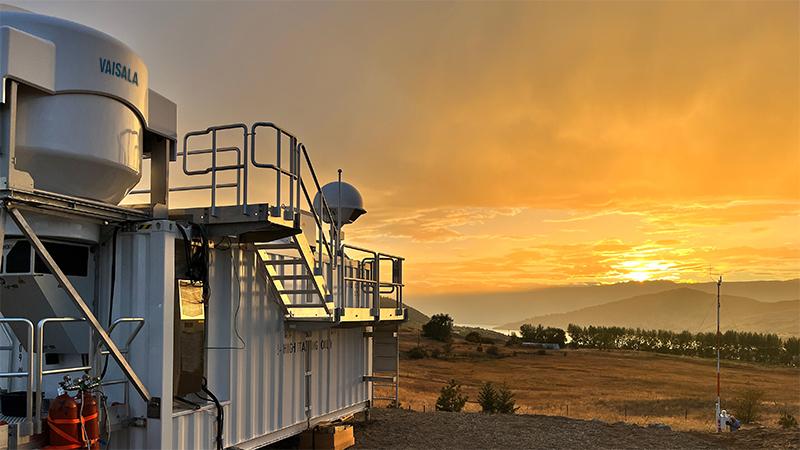GBON and Vaisala: Taking every measure to enable weather resilience for all
Last year we witnessed record-high temperatures and a massive amount of other extreme weather events. As climate change continues to threaten our civilization, the theme of this year’s World Meteorological Day couldn’t be any more fitting “At the frontline of climate action." But to take action, we first need to understand. A critical part of creating that understanding is the measurement data.
With over 20,000 weather monitoring stations deployed in 170+ countries across the globe over the past 85 years, Vaisala’s surface weather and upper-air sounding stations already provide near-real-time weather data to the World Meteorological Organization (WMO)’s Global Basic Observing Network (GBON).
The GBON network measures and transmits local weather observational data to national hydro-met services (NMHS) and international bodies in near-real time to improve numerical weather prediction (NWP) models for predicting impacts of climate change plus alerting to hazardous weather conditions. Weather alerts are essential to multi-hazard early warning systems (MHEWS) and the UN’s Early Warning for All Initiative (EW4All), “a groundbreaking effort to ensure everyone on Earth is protected from hazardous weather, water, or climate events through life-saving early warning systems by the end of 2027.” (EW4All Executive Action Plan 2023-2027, United Nations).
Recently, Vaisala supplied the Tanzania Meteorological Authority with 35 automatic weather stations with a network management system. This high-quality, low-maintenance, and field-proven equipment, plus Vaisala’s world-class operational and maintenance training, provides the backbone enabling Tanzania to meet their ongoing GBON-compliance reporting requirements.
However, there still are massive gaps in the global observation network, with under 10% of expected observation data being received from the 68 Least Developed Countries (LDCs) and Small Island Developing States (SIDS), spread across Africa, Asia, the Caribbean, and the Pacific.
Financing facility to help fill observational gaps
To plug GBON’s observational data gaps, the UN established the Systematic Observations Financing Facility (SOFF) climate fund to provide qualified grants to the 68 LDC and SIDS countries to purchase new or upgrade existing surface and upper-air weather stations and to operate them for up to 10 years.
Approximately $400 million will be used in the first 5 years (2023-2028) to perform country-level gap analysis, to procure & install equipment, and to train local NMHS staff. Subsequently, up to $50m/year will fund annual GBON network operations and maintenance costs including repairs, spare parts, consumables (such as radiosondes), and ongoing operator training & human capacity-building.
Data for climate action
Vaisala is a global leader in measurement instruments and intelligence for climate action and has almost 90 years of experience providing high-quality meteorological equipment around the world. We enable our customers to meet GBON-related needs for equipment, training, and life-cycle support: From our automatic surface weather observation station AWS810 to the industry-leading Cirrus® MW51 upper-air sounding system with RS41 radiosondes, and the industry-first optional RS41 E-model featuring biodegradable cover, twine, and 66% less plastics. We offer high-quality comprehensive training (installation, operation, maintenance, repair) both in person and online. Our global network of local partners ensures there is a helping hand nearby at all times.
Climate action needs reliable climate data. The collaborative efforts with the Global Basic Observing Network (GBON) reinforce the commitment to providing near-real-time weather data to tackle the challenges posed by climate change. With Vaisala's expertise and the financial support from initiatives like SOFF, we move towards a future where comprehensive climate data empowers nations to build resilience, mitigate risks, and create a safer planet for all.
Learn more about our GBON-compliant instruments and intelligence.
Photo credit: Andy Ledger

